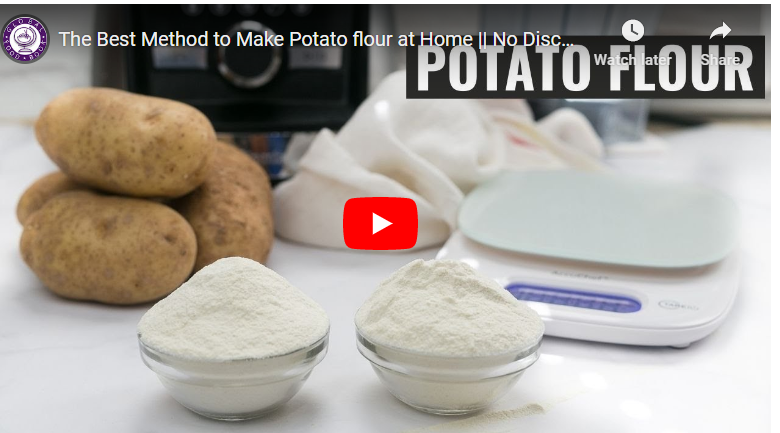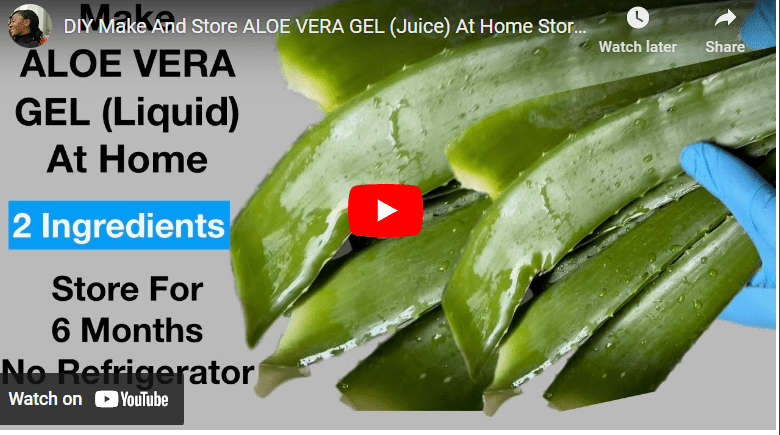Pig farming is an essential aspect of agriculture in South Africa, with a significant contribution to the country’s economy. To maximize profitability in pig farming, it is essential to provide high-quality, nutritious feed that meets the pigs’ nutritional requirements.
One way to ensure the feed is well-balanced and cost-effective is by formulating the feed yourself. With the availability of various locally sourced ingredients, formulating pig feed in South Africa can be a cost-effective way to provide your pigs with a well-balanced diet.
This article will explore the benefits, challenges, equipment needed, and best practices for formulating pig feed in South Africa.
How to Formulate Pig Feed in South Africa
Formulating pig feeds can be a daunting task, especially for beginner pig farmers in South Africa. However, with the right ingredients and guidance, it can be a straightforward process.
The following step-by-step instructions will help you formulate your pig feed and ensure a steady supply for your animals.
Read Also: How To Formulate Pig Feed In Nigeria
Step 1: Determine the Nutrient Requirements For Your Pigs
To formulate the best pig feed for your animals, you need to determine their nutrient requirements first.
This is based on the age, weight, and reproductive status of your pigs. To get an accurate assessment, you can consult with a veterinarian or animal nutritionist to help you determine the appropriate nutrient requirements for your pigs.
Read Also: How To Formulate Pig Feed In Kenya
Step 2: Select the Ingredients For Your Pig Feed
Once you have determined the nutrient requirements of your pigs, the next step is to select the ingredients for their feed.
The ingredients needed to formulate pig feed in South Africa may vary depending on the age and weight of the pigs and the desired nutritional requirements.
However, here is a list of common ingredients used in pig feed formulations in South Africa, including local ingredients:
Read Also: How To Formulate Pig Feed In Ghana
- Maize: Maize is the primary ingredient used in pig feed, providing energy and carbohydrates.
- Soybean Meal: Soybean meal is a good source of protein for pigs, which is essential for growth and development.
- Sunflower Meal: Sunflower meal is another source of protein that can be used in pig feed formulations.
- Wheat Bran: Wheat bran is a by-product of wheat milling and is rich in fiber, which aids in digestion.
- Lucerne Meal: Lucerne meal is a good source of protein and fiber and can be used to supplement other feed ingredients.
- Fishmeal: Fishmeal is a good source of protein and essential fatty acids, which can improve pig growth and development.
- Limestone: Limestone is a source of calcium, which is essential for bone development in pigs.
- Salt: Salt is necessary for maintaining the electrolyte balance in the pig’s body.
- Vitamins and Minerals: Pigs require various vitamins and minerals, including Vitamin A, D, E, K, B complex, zinc, copper, and selenium, to support growth and development.
- Additives: Additives such as enzymes, probiotics, and antimicrobials can be added to pig feed to improve digestibility and prevent disease.
Read Also: How To Formulate Fish Feed In the US
Step 3: Calculate the Quantities Of Each Ingredient
After selecting the ingredients, you need to calculate the quantities of each ingredient needed in the feed formulation.
This requires careful consideration of the nutrient content of each ingredient and the nutrient requirements of your pigs.
You can use a feed formulation software or consult with an animal nutritionist to help you calculate the correct amounts of each ingredient.
Read Also: How To Formulate Fish Feed In UK
Step 4: Prepare the Ingredients For Mixing
Once you have calculated the quantities of each ingredient, you need to prepare them for mixing. This includes cleaning, drying, and grinding the ingredients as necessary. You should also ensure that the ingredients are stored in a clean, dry place to prevent contamination and spoilage.
Step 5: Blend or Mix The Ingredients
The blending or mixing process for pig feed will depend on the specific feed formulation and the available equipment. However, here is a general step-by-step guide on how to blend or mix pig feed:
Read Also: How To Formulate Fish Feed in Nigeria
Step 1. Weigh The Ingredients
Weigh each ingredient according to the feed formulation. It’s essential to ensure that the weighing scale is accurate to ensure that the pig feed has the right nutritional content.
Step 2. Mix Dry Ingredients
Combine all the dry ingredients, including maize, soybean meal, sunflower meal, wheat bran, lucerne meal, fishmeal, limestone, salt, vitamins, and minerals, in a mixing container.
https://www.youtube.com/watch?v=IvLbqEJWPRY&pp=ygUpSG93IHRvIEZvcm11bGF0ZSBQaWcgRmVlZCBpbiBTb3V0aCBBZnJpY2E%3D
Step 3. Mix Liquid Ingredients
If any liquid ingredients are part of the feed formulation, such as molasses, water, or vegetable oil, add them to the dry ingredients and mix thoroughly.
Read Also: [Beginners Guide] How To Formulate Fish Feed in Uganda
Step 4. Blend Ingredients:
Transfer the mixture to a feed blender or mixer and blend the ingredients thoroughly. The blending time may vary depending on the equipment used, but typically it takes 5-10 minutes.
Step 5. Add Additives
Add any additives, such as enzymes, probiotics, or antimicrobials, to the blended feed mixture and mix thoroughly.
Read Also: [Beginners Guide] How To Formulate Fish Feed In South Africa
Step 6. Quality Check
Once the blending process is complete, take a sample of the feed mixture for a quality check. Check the moisture content, particle size, and uniformity of the feed mixture to ensure that it meets the required standards.
Step 6: Store The Feed
Store the blended feed in a clean, dry, and cool place. It’s essential to keep the feed away from moisture and pests that can spoil it.
Benefits of Formulating Pig Feeds
- Customizable: Formulating pig feed allows for customization of the feed to meet the specific nutritional needs of the pigs at different stages of growth.
- Cost-effective: By formulating pig feed, farmers can reduce the cost of feed by using locally available ingredients and avoiding the expense of purchasing pre-formulated feed.
- Increased efficiency: Customized feed formulations can increase feed efficiency and reduce waste, resulting in healthier pigs and increased profitability for the farmer.
- Improved herd health: Formulating pig feed allows for better control of the ingredients used, which can help prevent nutritional deficiencies and reduce the risk of disease and other health issues in the herd.
Read Also: [Beginners Guide] How To Formulate Feed For Snail
Challenges of Formulating Pig Feeds
- Lack of expertise: Formulating pig feed requires specialized knowledge of pig nutrition and feed formulation, which may be a challenge for farmers without this expertise.
- Quality control: Ensuring the quality of the feed ingredients used in the formulation and the final feed product can be a challenge, particularly when using locally available ingredients.
- Equipment: Formulating pig feed may require specialized equipment, such as a feed grinder or mixer, which can be expensive and difficult to obtain.
Read Also: [Beginners Guide] How To Formulate Feed For Snail In Ghana
Disadvantages of Formulating Pig Feeds
- Time-consuming: Formulating pig feed can be time-consuming, especially for farmers with limited time and resources.
- Errors: Errors in feed formulation can have a significant impact on pig health and productivity, leading to financial losses for the farmer.
Equipment Needed to Formulate Pig Feeds
- Weighing scale: A reliable weighing scale is essential for accurately measuring feed ingredients.
- Feed grinder: A feed grinder is used to grind ingredients such as maize and wheat bran into smaller particles for better digestion.
- Feed mixer: A feed mixer is used to blend the different ingredients and ensure uniform distribution.
- Storage containers: Clean, dry storage containers are necessary to store feed ingredients and the final feed product.
Best Practices to Formulate Pig Feeds:
- Work with a nutritionist or veterinarian to develop a feed formulation that meets the nutritional needs of the pigs.
- Source high-quality feed ingredients and regularly check for the presence of toxins and other contaminants.
- Ensure accurate weighing and measurement of feed ingredients.
- Regularly test the feed product for nutritional content and quality control.
- Store feed ingredients and the final feed product in clean, dry, and pest-free environments.
Where To Sell Pig Feeds in South Africa
- Local feed stores: Many local feed stores sell pig feed and may be interested in purchasing feed from local farmers.
- Online marketplaces: Online marketplaces, such as Gumtree and OLX, offer a platform for farmers to sell pig feed to buyers across South Africa.
- Direct to pig farmers: Farmers can sell pig feed directly to pig farmers in their local area or through networking with other farmers and industry professionals.
Best Pig Feed Formula
The best pig feed formula will depend on several factors, including the age and weight of the pigs, their nutritional requirements, and the availability of ingredients.
A typical pig feed formula for grower pigs may include maize, soybean meal, wheat bran, lucerne meal, fishmeal, limestone, salt, vitamins, and minerals.
However, it’s crucial to work with a nutritionist or veterinarian to develop a feed formulation that meets the specific nutritional needs of the pigs.
How to Feed Pigs Cheaply
There are several ways to feed pigs cheaply, including:
- Use locally available ingredients: Use locally available ingredients such as maize, sorghum, and cassava instead of imported feed ingredients.
- Substitute expensive ingredients: Substitute expensive feed ingredients with cheaper alternatives that have similar nutritional content.
- Feed waste products: Feed waste products such as vegetable trimmings, fruit pulp, and whey, can be used to supplement pig feed.
- Grow feed on the farm: Growing feed crops such as maize and soybeans on the farm can reduce the cost of purchasing feed.
Fast Growing Pig Feed PDF
A fast-growing pig feed pdf may include a feed formulation that is high in protein and energy to promote fast growth. The feed formula may include ingredients such as soybean meal, fishmeal, maize, wheat bran, and vegetable oil.
Pig Feed Formulation PDF
A pig feed formulation pdf may include a detailed guide on how to formulate pig feed, including information on the nutritional requirements of pigs at different stages of growth, feed ingredients, and the recommended mixing ratios.
Ingredients for Pig Feed Formulation
Ingredients commonly used in pig feed formulations include maize, soybean meal, wheat bran, lucerne meal, fishmeal, limestone, salt, vitamins, and minerals.
Other ingredients may include vegetable oil, molasses, and feed additives such as enzymes and probiotics.
Pig Grower Feed Formulation
Pig grower feed formulation should take into account the nutritional requirements of the pigs at the grower stage, which typically ranges from 40 to 110 kilograms.
A typical pig grower feed formula may include maize, soybean meal, wheat bran, lucerne meal, fishmeal, limestone, salt, vitamins, and minerals.
Pig Feed Ingredients PDF
A pig feed ingredients pdf may provide information on the nutritional content and recommended usage of different feed ingredients used in pig feed formulations.
It can be a useful resource for farmers and nutritionists developing pig feed formulations.
Types of Feeds for Pigs
There are different types of feeds for pigs, including:
- Starter feed: A high-protein and high-energy feed given to piglets up to six weeks of age.
- Grower feed: A feed given to pigs from six weeks to six months of age, designed to promote steady growth.
- Finisher feed: A high-energy feed given to pigs in the final stages of growth, designed to promote weight gain and the development of lean muscle.
- Breeder feed: A feed given to breeding sows to support their reproductive needs.
- Specialty feed: Specialty feeds may include medicated feeds to prevent disease, organic feeds for organic pig farming, and other specialized feeds designed to meet specific nutritional or production needs.
Conclusion
Formulating pig feed in South Africa can be a cost-effective way to provide your pigs with a well-balanced diet that meets their nutritional requirements. It requires careful planning, sourcing of ingredients, and the use of appropriate equipment. By following the best practices and seeking expert advice, pig farmers in South Africa can produce high-quality feed that ensures healthy and productive pigs.



